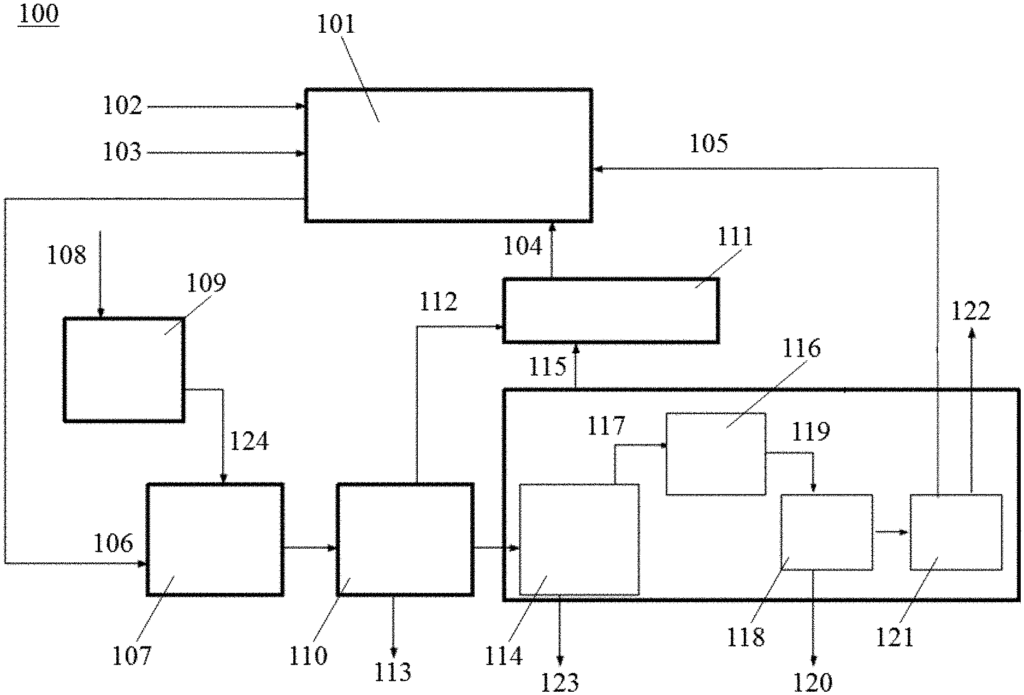Invented by Guido Radaelli, Humera A. Rafique, Srinivas Vuddagiri, Erik C. Scher, Jarod McCormick, Joel Cizeron, Bipinkumar Patel, Satish LAKHAPATRI, CB&I Technology Inc
The market for efficient oxidative coupling of methane (OCM) systems and processes is experiencing significant growth as the demand for cleaner and more sustainable energy sources continues to rise. OCM is a promising technology that converts methane, the primary component of natural gas, into higher-value chemicals such as ethylene and ethane.
Traditionally, methane has been used primarily as a fuel source for heating and electricity generation. However, with the increasing concerns about greenhouse gas emissions and the need to transition to a low-carbon economy, there is a growing interest in finding alternative uses for methane. OCM offers a viable solution by utilizing methane as a feedstock for the production of valuable chemicals, thereby reducing its carbon footprint.
The OCM process involves the reaction of methane and oxygen over a catalyst to produce ethylene and water. Ethylene is a key building block for the production of various plastics, chemicals, and fuels, making it a highly sought-after commodity in industries such as packaging, automotive, and construction. By converting methane into ethylene through OCM, companies can reduce their reliance on fossil fuels and contribute to a more sustainable future.
One of the main challenges in OCM is developing efficient catalysts that can selectively convert methane into ethylene while minimizing unwanted byproducts. Researchers and companies have been actively working on improving catalysts to enhance the selectivity and efficiency of the OCM process. This has led to the development of various catalyst formulations, including mixed metal oxides and supported catalysts, which have shown promising results in laboratory and pilot-scale studies.
The market for OCM systems and processes is expected to witness substantial growth in the coming years. According to a report by Grand View Research, the global OCM market size was valued at USD 2.8 billion in 2020 and is projected to expand at a compound annual growth rate (CAGR) of 13.2% from 2021 to 2028. The increasing demand for ethylene and the need to reduce greenhouse gas emissions are the key factors driving this growth.
Several companies are actively investing in OCM technology and scaling up their operations to meet the growing demand for ethylene. For instance, Siluria Technologies, a leading player in the OCM market, has developed a proprietary catalyst and process technology that enables the direct conversion of methane to ethylene. The company has successfully demonstrated its technology at a commercial-scale plant and is now working on expanding its production capacity.
In addition to Siluria Technologies, other major players in the OCM market include Haldor Topsoe, Clariant, and Linde. These companies are investing in research and development activities to improve catalyst performance, optimize process conditions, and reduce the overall cost of OCM systems. Moreover, collaborations and partnerships between catalyst manufacturers, technology providers, and end-users are also driving innovation in the OCM market.
The market for efficient oxidative coupling of methane systems and processes holds immense potential for the future. As governments and industries worldwide strive to reduce their carbon footprint and transition to a more sustainable energy landscape, OCM offers a promising solution to utilize methane, a potent greenhouse gas, for the production of valuable chemicals. With ongoing advancements in catalyst technology and increasing investments in OCM infrastructure, the market is poised for significant growth in the coming years.
The CB&I Technology Inc invention works as follows
The present disclosure describes oxidative coupling methane systems (OCMs) for both small-scale and large-scale production of olefins. OCM systems may include an OCM subsystem which generates a stream of C2+ compounds as well as non-C2+ contaminants from methane, and an oxidizing substance. Separation subsystems downstream and fluidically coupled with the OCM subsystem are used to separate non-C2+ contaminants from C2+ compounds. A methanation system downstream and fluidically connected to the OCM can be used to react CO and/or H2 in the non C2+ impurities, to generate methane. This methane can then be recycled back to the OCM. The OCM system may be integrated into a non-OCM subsystem, such as an existing ethylene system or a natural gases liquids system.
Background for Efficient oxidative coupling of methane systems and processes
INCORPORATION BY RESEARCH
OCM Processes to Produce Olefins”.
Subsystems of an OCM Unit
Methanation Systems
OCM System Configurations
Air Separation Units and Power Production
Oxidizing Agents
Ethane Skimming
Gas Processing Plants”.
Ethylene Plants
Control Systems
EXAMPLES
Example 1 : Implementation OCM
Example 2 : Design Basis for OCM Implementation
Example 3 : Catalyst preparation and Catalyst life
Example 4 : OCM Reactors and Reaction Systems
Example 5 – OCM Process Gas Compression & Treating
Example 6 – OCM Process Gas Separation
Example 7 – Refrigeration and Steam Generator
Example 8 : Stream Compositions
Example 9. Equipment, Materials of Construction and Utilities”.
